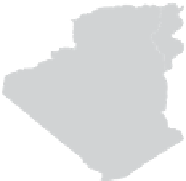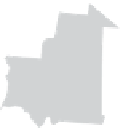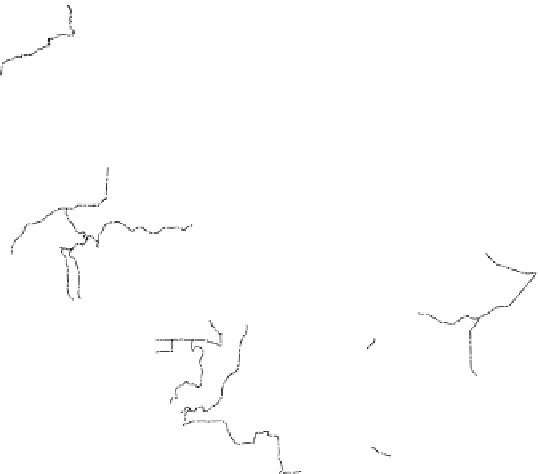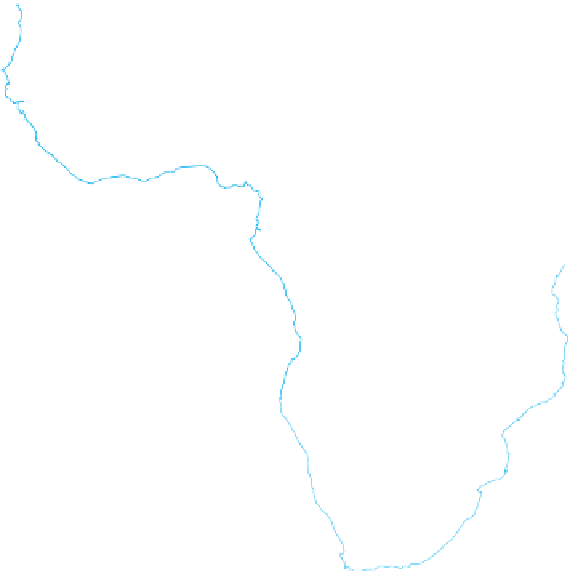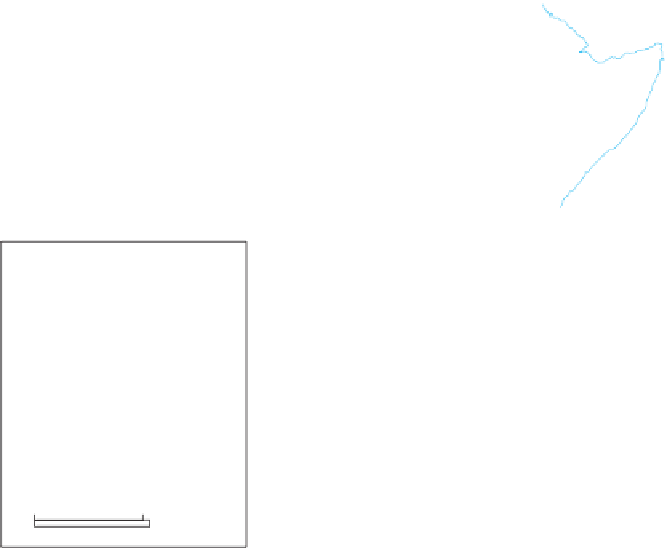Geography Reference
In-Depth Information
20°
10°
SUDANO - SAHELIAN AFRICA
SUB-HUMID
AND
MOUNTAIN
EAST AFRICA
HUMID AND SUB-HUMID
WEST AFRICA
SUDANO -
SAHELIAN
AFRICA
HUMID
CENTRAL
AFRICA
ATLANTIC
0°
0°
OCEAN
INDIAN
OCEAN
Figure 13.21
Major Regions and Forest Zones in
Subsaharan Africa.
This map is based
on a fi gure in a World Bank technical
paper on the forest sector in Subsaharan
Africa. The map shows major forest
regions crossing state boundaries, but
planning regions adhere to state bound-
aries.
Adapted with permission from:
N.
P. Sharma, S. Rietbergen, C. R. Heimo,
and J. Patel. A Strategy for the Forest
Sector in Sub-Saharan Africa, World Bank
Technical Paper No. 251, Africa Technical
Department Series (Washington, DC: The
World Bank, 1994).
10°
0°
SUBSAHARAN
AFRICAN FOREST
10
°
Tropical rainforest
SUB-HUMID AND SEMI-ARID
SOUTHERN AFRICA
SUB-HUMID
AND
MOUNTAIN
EAST AFRICA
Tropical deciduous forest
20°
Tropical dry forest
None, or limited forest
Boundaries of planning
regions
30°
0
400
800
1200 Kilometers
Longitude East of Greenwich
0
400
800 Miles
10˚
0˚
10°
20°
30°
40°
50°
Biological Diversity
International concern over the loss of species led to calls
for a global convention (agreement) as early as 1981. By
the beginning of the 1990s, a group working under the
auspices of the United Nations Environment Program
reached agreement on the wording of the convention, and
it was submitted to UNCED for approval. It went into
effect in late 1993; as of 2011, 168 countries had signed
it. The convention calls for establishing a system of pro-
tected areas and a coordinated set of national and inter-
national regulations on activities that can have signifi cant
negative impacts on biodiversity. It also provides funding
for developing countries that are trying to meet the terms
of the convention.
The biodiversity convention is a step forward in
that it both affi rms the vital signifi cance of preserving
biological diversity and provides a framework for coop-
eration toward that end. However, the agreement has
proved diffi cult to implement. In particular, there is an
ongoing struggle to fi nd a balance between the need of
poorer countries to promote local economic development
in all sorts of ways. Take the case of the GEF. Between
1991 and 2010, the GEF provided $4.5 billion in grants,
primarily to projects involving climate change or biodi-
versity. Even though the GEF is charged with protecting
key elements of the global environment, it still functions
in a state-based world, as suggested by Figure 13.21—a
map from a 1994 World Bank technical report on the
forest sector in Subsaharan Africa that divides the realm
into “major regions” that follow state, rather than ecologi-
cal borders. Moreover, the GEF nonetheless serves the
important role of providing fi nancial resources to four
major international conventions on the environment: the
Convention on Biological Diversity, the United Nations
Framework Convention on Climate Change, the United
Nations Convention to Combat Desertifi cation, and the
Stockholm Convention on Persistent Organic Pollutants.
A few global environmental issues are so press-
ing that efforts are being made to draw up guidelines for
action in the form of international conventions or treaties.
The most prominent examples are in the areas of biologi-
cal diversity, protection of the ozone layer, and global
climate change.




































